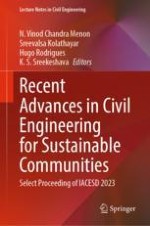2024 | OriginalPaper | Buchkapitel
Prediction of Soaked CBR Value of Sub-base Soil Using Artificial Intelligence Model
verfasst von : Ishwor Thapa, Sufyan Ghani
Erschienen in: Recent Advances in Civil Engineering for Sustainable Communities
Verlag: Springer Nature Singapore
Aktivieren Sie unsere intelligente Suche, um passende Fachinhalte oder Patente zu finden.
Wählen Sie Textabschnitte aus um mit Künstlicher Intelligenz passenden Patente zu finden. powered by
Markieren Sie Textabschnitte, um KI-gestützt weitere passende Inhalte zu finden. powered by
